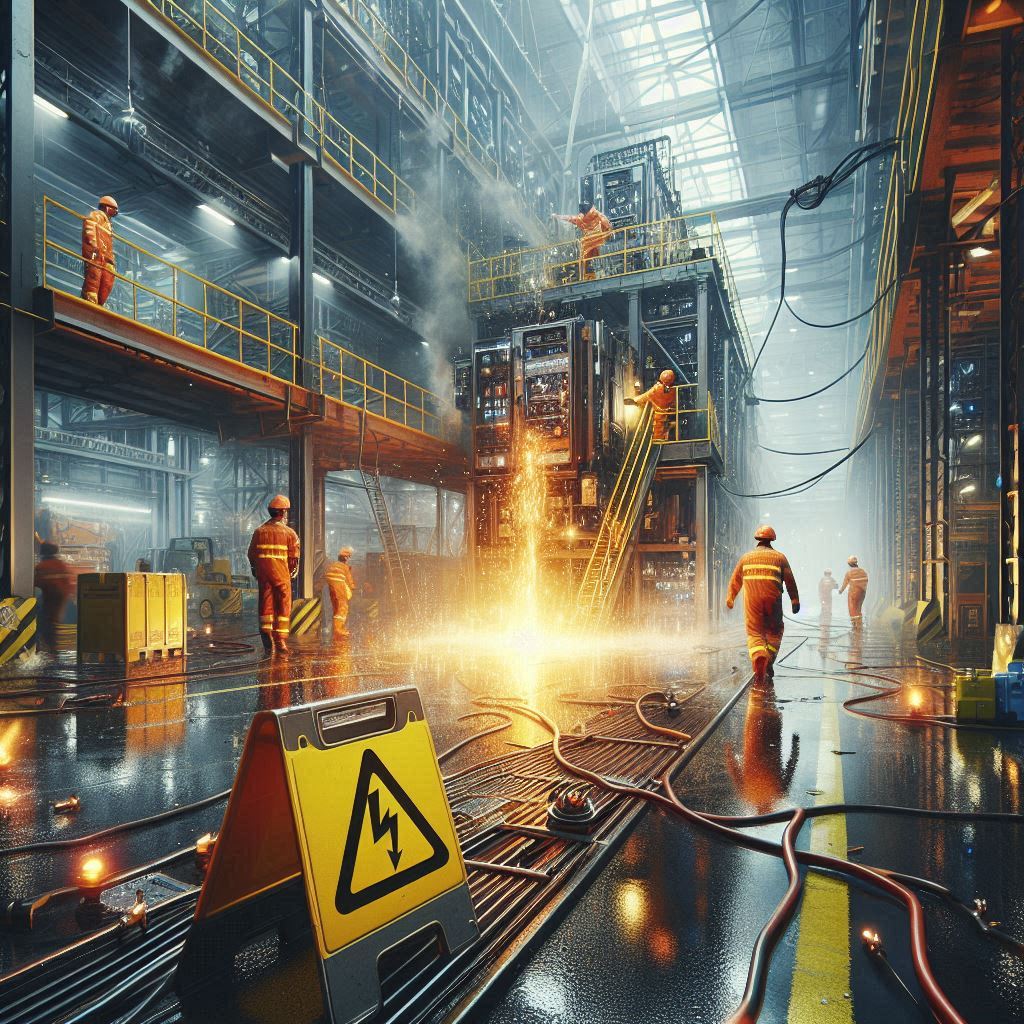Working in industrial environments often involves dealing with various hazards, one of the most significant being the use of electrical equipment. Ensuring the safe operation of this equipment is paramount to prevent accidents and injuries. One crucial safety measure is to never use electrical equipment on wet surfaces. Let's explore why this is so vital and how it impacts safety in industrial settings.
Understanding the Risks
1. Electrical Shock
Water is an excellent conductor of electricity. When electrical equipment comes into contact with water, the risk of electrical shock increases dramatically. This can lead to severe injuries or even fatalities, especially in high-voltage environments.
2. Short Circuits
When electrical devices are used on wet surfaces, the moisture can infiltrate the equipment and cause short circuits. This not only damages the equipment but also poses a risk of fire, which can have catastrophic consequences in an industrial setting.
3. Equipment Damage
Moisture can corrode electrical components, leading to malfunctions and breakdowns. The cost of repairing or replacing damaged equipment can be significant, impacting the overall productivity and efficiency of industrial operations.
4. Fire Hazards
Short circuits caused by wet conditions can generate sparks, potentially igniting flammable materials present in the vicinity. Industrial environments often contain combustible substances, making this a serious hazard.
5. Regulatory Compliance
Industrial operations are governed by strict safety regulations. Using electrical equipment on wet surfaces can lead to violations of these regulations, resulting in fines, legal issues, and a tarnished reputation.
Best Practices for Safety
1. Dry Work Areas
Ensure that all work areas are dry before using electrical equipment. Use absorbent materials and dehumidifiers to manage moisture levels.
2. Regular Inspections
Conduct regular inspections of electrical equipment to check for signs of moisture damage. Replace any compromised components immediately.
3. Proper Training
Train employees on the dangers of using electrical equipment on wet surfaces and enforce strict safety protocols. Regular safety drills can help reinforce these practices.
4. Use of Protective Gear
Equip workers with appropriate protective gear, such as insulated gloves and boots, to minimize the risk of electrical shock in case of accidental exposure to wet surfaces.
5. Moisture-Resistant Equipment
Invest in moisture-resistant or waterproof electrical equipment designed for industrial use. This can provide an additional layer of safety in environments where water exposure is unavoidable.
Conclusion
The importance of avoiding the use of electrical equipment on wet surfaces in industrial settings cannot be overstated. By understanding the risks and implementing robust safety practices, industrial operations can protect their workforce, equipment, and overall productivity. Safety should always be the top priority, ensuring a secure and efficient working environment.
#IndustrialSafety #ElectricalSafety #WorkplaceSafety #OSHACompliance #SafetyFirst #PreventAccidents #IndustrialHazards #ElectricalEquipment #SafetyProtocols #SafeWorkEnvironment #MoistureControl #ElectricalShock #ShortCircuitPrevention #FireSafety #EquipmentMaintenance #SafetyTraining #EmployeeSafety #IndustrialOperations #RiskManagement #Compliance #SafetyGear #WetSurfaces #MoistureResistant #SafetyPractices #EmergencyPreparedness #IndustrialStandards #WorkplaceHazards #SafeWorkingConditions #IndustrialSafetyTips #SafetyRegulations
By adhering to these guidelines and fostering a culture of safety, industries can significantly reduce the risks associated with electrical equipment and wet surfaces, ensuring a safer and more productive workplace for all.
